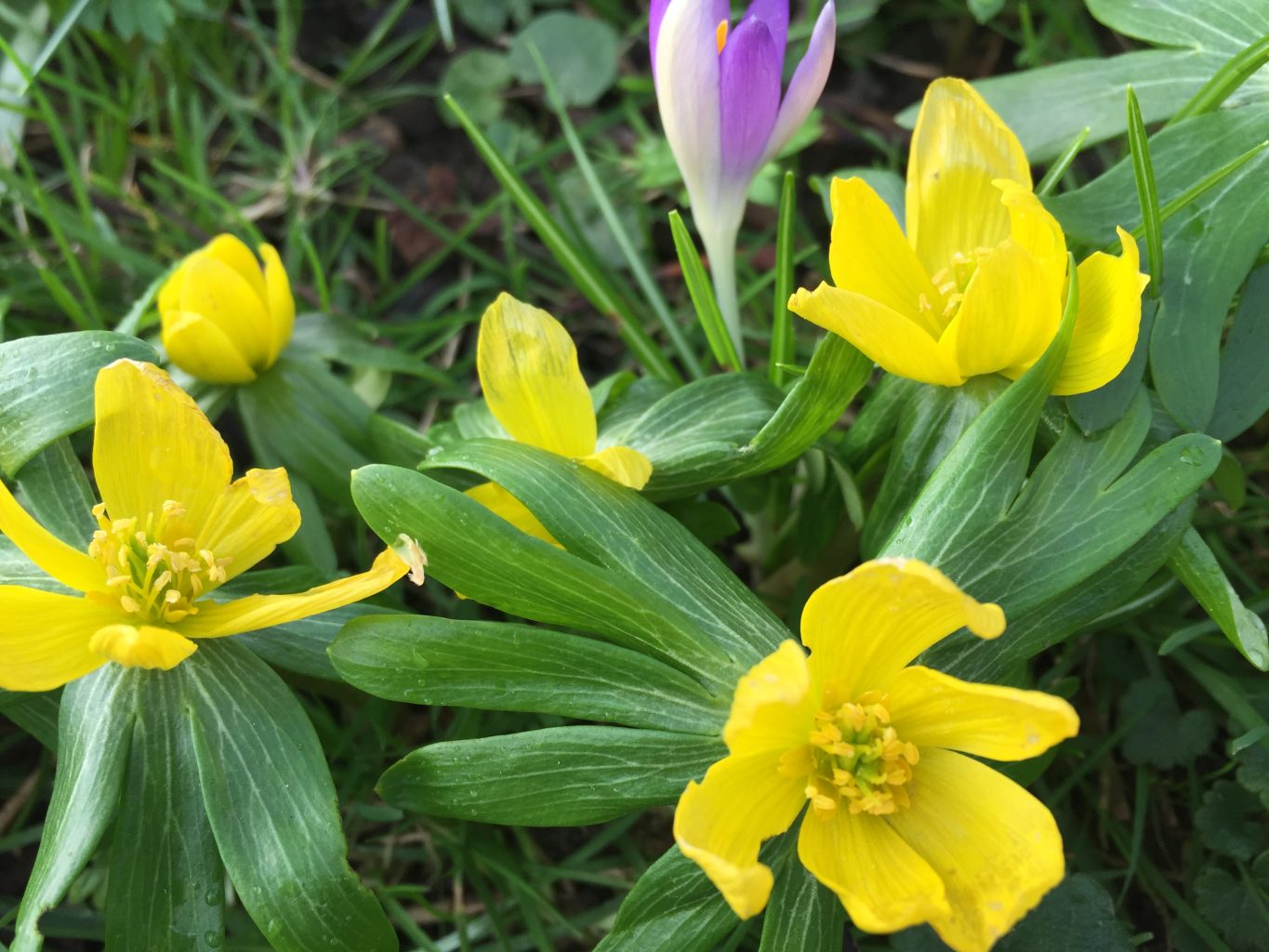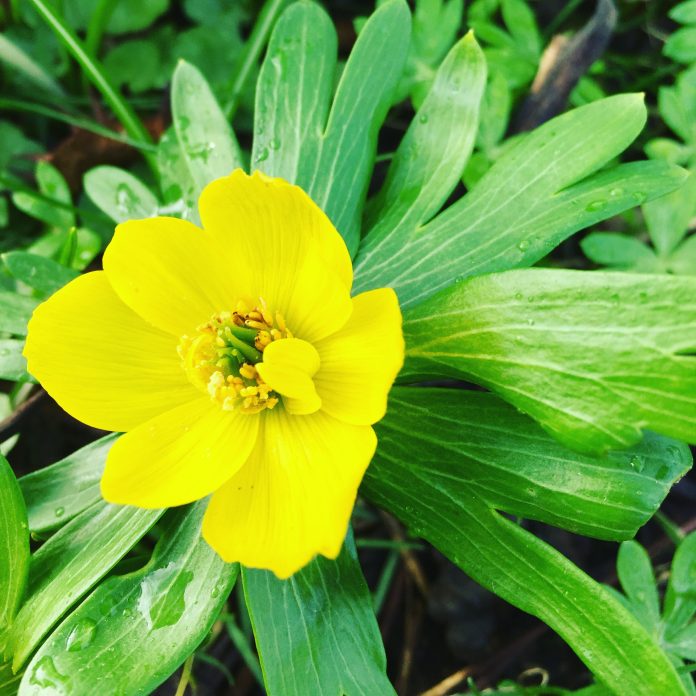Winter aconites (Eranthis hyemalis) are charming and resilient early bloomers, adorning your garden with a burst of cheerful yellow blooms during the late winter and early spring months. They are sometimes called winter hellebore or winter wolf’s bane. Native to Europe and Asia, these petite flowers thrive in cold weather, making them a delightful harbinger of spring. Growing winter aconites may seem challenging, but with the right knowledge and care, you can enjoy their bright flowers even in the coldest months. In this article, we’ll explore the essential steps to successfully cultivate winter aconites in your garden.
Aconites are poisonous if eaten so maybe think twice about planting them if you have curious pets
Best Varieties of Winter Aconites
Winter aconites (Eranthis hyemalis) offer a range of varieties, each with its own unique characteristics. Here are some popular and well-regarded varieties that are often considered among the best:
Eranthis hyemalis ‘Guinea Gold’:
- Known for vibrant golden-yellow flowers.
- Reliably blooms in late winter to early spring.
- Tends to naturalize well, forming impressive colonies over time.
Eranthis hyemalis ‘Winter’s Joy’:
- Features large, bright yellow flowers.
- Often starts flowering slightly earlier than some other varieties.
Eranthis hyemalis ‘Schwefelglanz’ (Sulphur-Glow):
- Recognized for unique sulfur-yellow flowers.
- Thrives in various soil conditions.
Eranthis hyemalis ‘Orange Glow’:
- Distinctive orange-yellow flowers for a warm touch.
- Hardy and resilient, able to withstand colder temperatures.
Eranthis hyemalis ‘Flore Pleno’ (Double-flowered):
- Double-flowered variety with fully-petaled blooms.
- Adds an elegant touch to the winter garden.
Eranthis hyemalis ‘Grunling’ (Green-Tipped):
- Notable for yellow flowers with green-tipped sepals.
- Creates an intriguing color contrast.
When selecting a variety of winter aconites, consider factors such as bloom color, size, and growth habit to complement your garden design. Additionally, check with local nurseries or gardening experts to find varieties that are well-suited to your specific climate and soil conditions.

Choosing the Right Location:
Winter aconites prefer well-drained soil and partial shade. Select a location with dappled sunlight, especially during the spring when the trees have not yet fully leafed out. Avoid areas with waterlogged soil, as winter aconites are susceptible to rot in overly damp conditions.
.
Soil Preparation:
Ensure the soil is rich in organic matter and well-draining. Add compost to improve soil fertility and structure. A slightly acidic to neutral pH (6.0-7.0) is ideal for winter aconites.
Planting Time:
The best time to plant winter aconite bulbs is in the early fall, before the first frost. Plant the bulbs about 2-3 inches deep and space them 3-4 inches apart. If you’re transplanting established winter aconites, do so in the early spring when they are in a dormant state.
Watering:
Winter aconites are relatively drought-tolerant, but they appreciate regular watering, especially during dry periods. Water sparingly during the growing season, and reduce watering after the foliage dies back in late spring.
Mulching:
Apply a layer of organic mulch, such as straw or leaf mold, to help conserve moisture, suppress weeds, and regulate soil temperature. Mulching is particularly important during the first winter after planting to protect the young bulbs.
Fertilization:
Winter aconites generally don’t require heavy fertilization. A balanced, all-purpose fertilizer applied in early spring as new growth emerges can help support healthy development.
Pest and Disease Management:
Winter aconites are relatively resistant to pests and diseases. However, watch out for slugs, which may nibble on the emerging foliage. Use organic slug repellents or handpick them to protect your plants.
Naturalizing and Propagation:
Winter aconites naturalize well and will multiply over time. Allow the foliage to die back naturally after blooming, as this helps the bulbs store energy for the next growing season. You can also propagate winter aconites by dividing the bulbs in the early summer.
Companion Planting:
Consider planting winter aconites alongside other early spring bulbs like snowdrops or crocuses. This creates a visually appealing display and ensures your garden remains vibrant even in the chilly months.
Enjoying the Blooms:
Once winter aconites begin to bloom, typically in late winter to early spring, take the time to appreciate their bright yellow flowers. These resilient little plants can withstand frost and even push through a light covering of snow, making them a delightful harbinger of spring.
Conclusion:
Growing winter aconites can be a rewarding experience for gardeners looking to add a touch of color to their winter landscape. By following these guidelines on location, soil preparation, planting, and care, you can successfully cultivate these charming flowers and enjoy their bright blooms year after year. Embrace the beauty of winter aconites and enhance your garden with their early burst of color and resilience.




